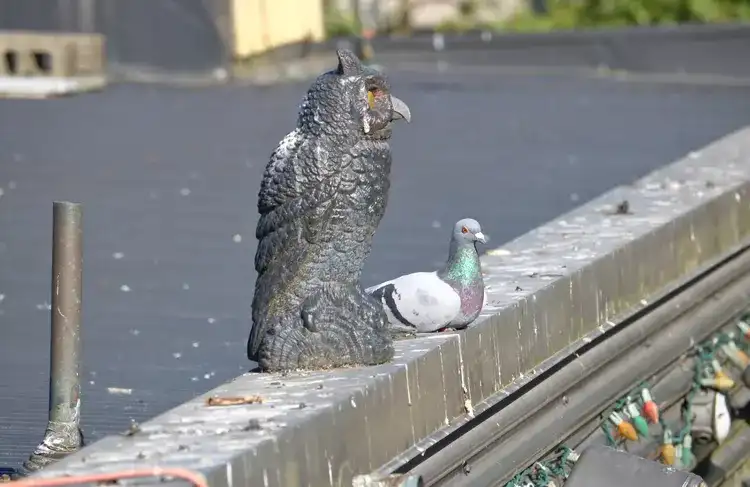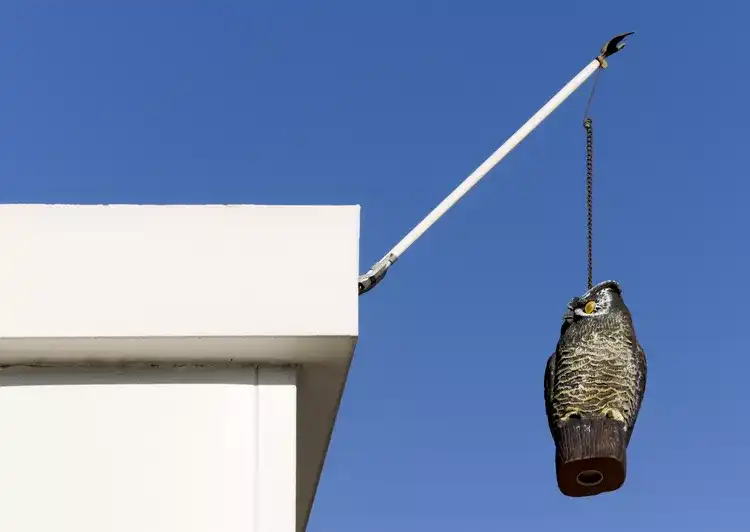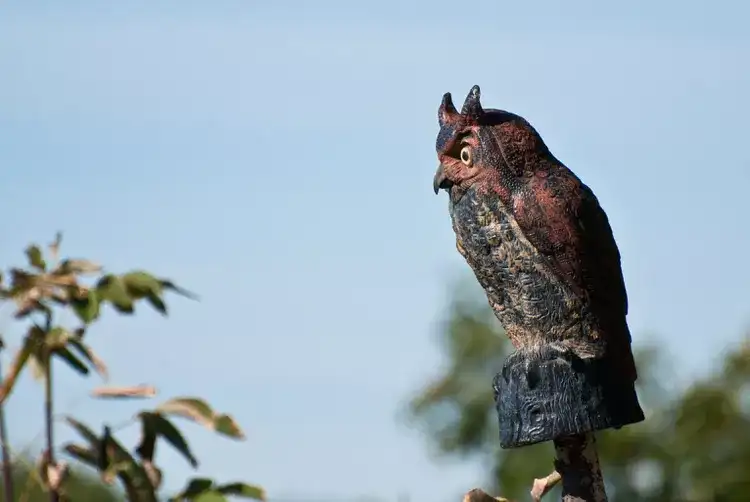You’ve probably spotted a plastic owl on a rooftop or a scarecrow slouched over a patch of crops, keeping a silent watch. These decoys are intended to spook birds and small animals away from gardens and fields. But how effective are they and do they actually work?
Scarecrows: Tradition With Mixed Results
Scarecrows have long been deployed to keep hungry birds like crows and sparrows from raiding newly planted seeds and ripening produce. But despite their iconic status, these still figures rarely maintain their scare factor for long. Birds are observant and once they realize that the oddly dressed figure in the field never moves, the threat evaporates.
More of a Perch Than a Threat
Birds may initially keep their distance, but eventually, some even use scarecrows as a convenient perch. As Avian Enterprises, a bird deterrent company, puts it, static scarecrows often go from deterrents to roosting spots in record time.
Owls: More Realistic, But Not Foolproof
Hoping to up the scare factor, many have turned to owl decoys. These fake predators prey on birds and small mammals in real life so placing one nearby should, in theory, keep pests at bay.

Temporary Success, Followed by Familiarity
Studies support the idea that owl decoys initially discourage bird activity. Research from Linfield College in Oregon revealed that birds were far less likely to approach feeders placed near a plastic owl than ones near a cardboard box. However, the birds gradually realized the owl wasn’t a threat, and soon resumed feeding undisturbed.
Motion: The Missing Ingredient
The key to keeping decoys effective is simple movement. A stationary fake owl may trick animals for a day or two, but without motion, it quickly loses credibility. Fortunately, there are ways to increase realism.
Tips for Keeping Decoys Effective
- Rotate the owl’s location regularly to suggest natural movement.
- Hang decoys from string so they sway in the wind, mimicking flight.
- Consider motion-based deterrents like spring-mounted products or inflatable decoys.
Other Deterrents That Move
Some alternatives are more active by design. Take Terror Eyes, for example a bouncing balloon with vivid, menacing eyes. Its motion and visual impact help it remain effective for longer. Another favorite of large farms is the inflatable tube man familiar to anyone who’s passed a car dealership. With their frantic movements, they’re excellent at startling birds.
Reflective Ribbons and DIY Tricks
California farmers often use PET ribbons tied directly to plants. These glint in the sun and disorient would-be invaders. At home, you can mimic this method using old CDs, aluminum foil strips, or spinning garden ornaments. Products like the Reflect-A-Bird Deterrent combine wind power with mirrored surfaces to keep animals on edge.

Sound-Based Deterrents: A Noisy Solution
Beyond physical decoys, some growers resort to sound. Propane cannons and explosive flash powder can scare off pests at least temporarily. However, birds often acclimate to regular, predictable sounds. Even metal wind chimes can lose their punch if left in one spot for too long.
Strategic Use Matters
- Rotate noise sources and vary the timing.
- Place chimes close to vulnerable plants, not just near patios or doors.
- Combine sound with visual movement for maximum deterrence.
Yes, But Only If You Stay One Step Ahead
Decoys like plastic owls and scarecrows can be effective, but only in the short term. Animals are quick learners, and once they realize the threat is fake, your defenses lose their edge. To outsmart these clever invaders, the trick is variety movement, rotation, and layered deterrents.
In the end, it’s less about scaring animals away forever and more about keeping them on their toes or claws. A dynamic approach can preserve your garden, field, or rooftop and give your decoys a little more street cred in the eyes of nature’s nibblers.





